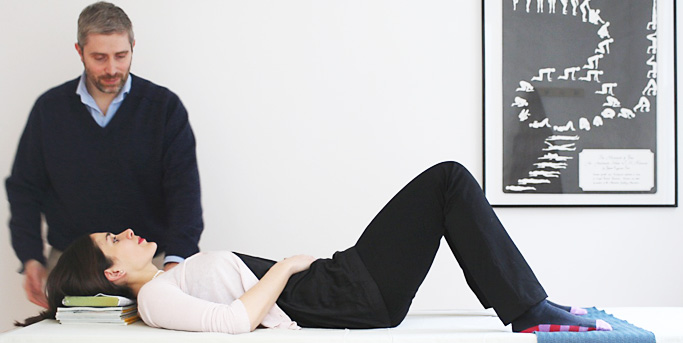The Alexander Technique can be most simply understood as a collection of exercises that can realign postural balance to improve overall posture. The Alexander technique is one of the most versatile and adaptable approaches to bettering posture and helping to promote a healthy relationship between body and mind.
The Key Principles of The Alexander Technique
The technique itself focuses on a number of key principles. These key principles are as follows:
1# Promoting awareness of how a person may sit, stand and move and how doing so can negatively or positively impact upon over all function
2# Understanding of the relationship between the head and the body –physically, to optimise movement, comfort and wellbeing
3# Understanding of the relationship between the head and the body –mentally, promoting a mindful approach, as explored in more depth on the Mental Health Foundation website
4# Nurturing the relationship between the mind and body through being conscious of the ways in which the body influences the mind and the mind simultaneously influences the body
The Alexander Technique and the NHS
Many people who may benefit from The Alexander Technique don’t because they are sceptical as to its legitimacy. Fortunately, in recent years many trusted and accredited health care providers, including the NHS, have embraced The Alexander technique and come to recognise its potential benefits.
The NHS website now features a section dedicated to providing impartial information on The Alexander Technique and attesting to the benefits of practising the technique. According to the NHS, The Alexander Technique provides a genuine means of achieving ‘a balanced, more naturally aligned body [and evidence] suggests the technique has the potential to improve certain health conditions’.
Who Could The Alexander Technique Benefit?
Because The Alexander Technique is not a ‘one size fits all’approach to wellbeing, it is wholly adaptable to the individual. Hence, the technique has huge potential to transform or at least improve the lives of many, from individuals who work within offices or sit for long periods, pregnant women and those suffering chronic back pain to musicians, dancers and athletes.
There are many insightful and useful online resources and ebooks, however, for anyone hoping to or at least considering practising The Alexander Technique though, it is advisable to seek the guidance of an expert, at least initially.
Teachers of the technique, such as Laura Long of The Laura Long Studio in London, provide the safest and most sensible means of learning more about the Alexander technique and how it might benefit individuals. I use Laura Long as an example because she is a qualified Alexander Technique teacher who studied under the expert, Anthony Kingsley at the Alexander Teacher Training School in central London. She is also a member of STAT (the Society of Teachers of The Alexander Technique).
When searching for someone to teach, instruct or advise about beginning Alexander Technique exercises, always look for an instructor who is qualified and a registered member of STAT. Some people claiming to be able to teach the technique are only self taught or enthusiasts without any proper or expert understanding. Whilst their intentions may well be good, their advice or approach could be potentially dangerous, especially to anyone pregnant or experiencing pain and / or injury.
Finally, for even more information about The Alexander Technique and as well mindfulness, another invaluable resource is the FM Alexander Technique Trust. The FM Alexander Trust is a registered charity which has been educating the public about The Alexander Technique since 1991 and now also promotes research and study of the technique.

